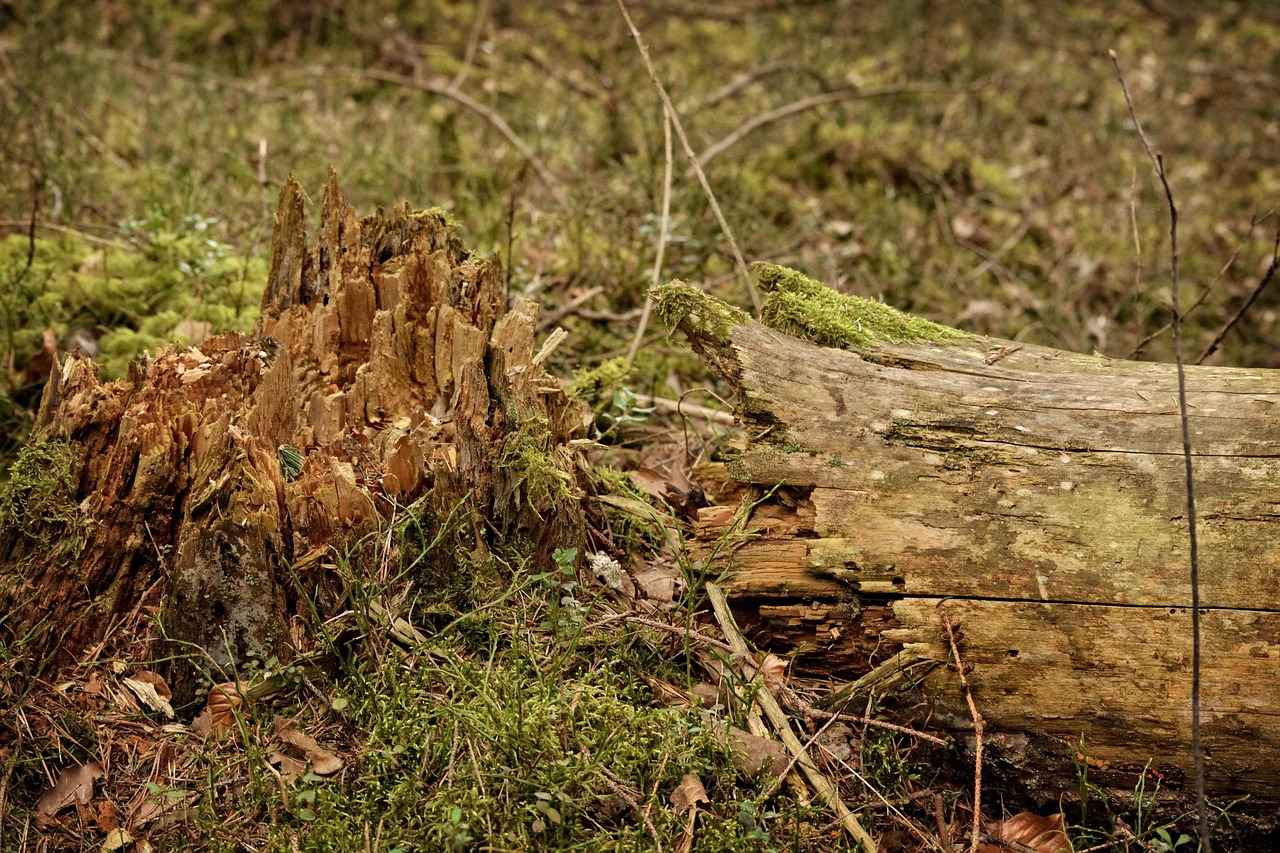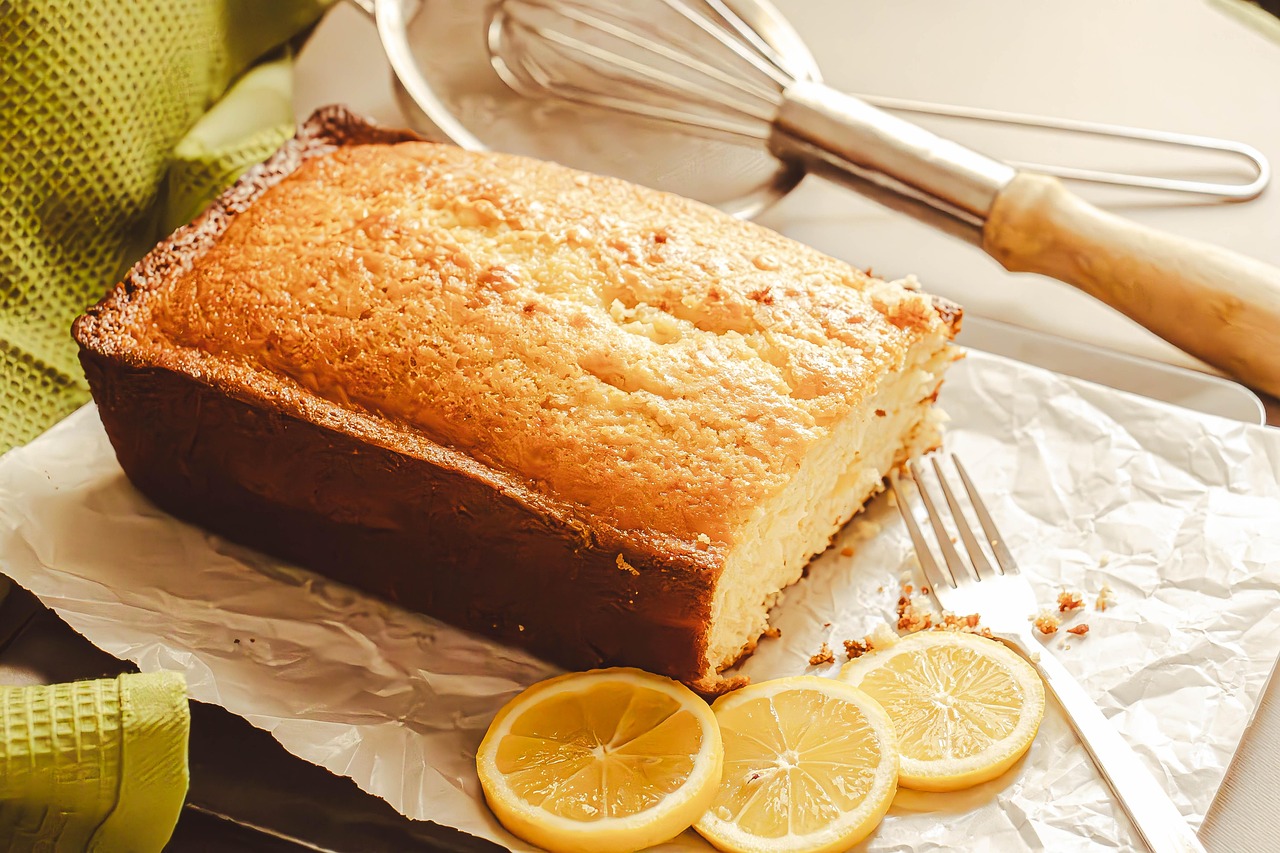Maintaining a clean and safe swimming pool is essential for enjoyment and health. One of the most effective chemicals used in pool maintenance is muriatic acid, a diluted form of hydrochloric acid. This article provides essential insights on using muriatic acid for pool maintenance, ensuring safety and effectiveness while maintaining optimal water quality.
Muriatic acid is primarily used to adjust pH levels in pool water, helping to prevent issues such as algae growth and cloudy water. Additionally, it is effective in removing stains from pool surfaces, making it an invaluable tool for pool owners. Understanding its role is crucial for effective pool care.
Handling muriatic acid requires caution due to its corrosive nature. Proper protective gear and handling techniques are essential to ensure safety during use. Here are some key safety measures:
- Essential Safety Gear for Muriatic Acid Use: Always wear appropriate safety gear, including gloves, goggles, and masks, to prevent skin burns and respiratory issues.
- Choosing the Right Gloves and Goggles: Select chemical-resistant gloves and goggles designed for acid use to provide maximum protection against splashes and spills during application.
- Ventilation and Safe Storage Practices: Ensure adequate ventilation in the workspace and store muriatic acid in a cool, dry place, away from direct sunlight and incompatible substances.
Following specific steps when applying muriatic acid can enhance safety and effectiveness, ensuring that pool water is balanced without hazards. Here’s how to do it:
- Determine the Correct Dosage: Before adding muriatic acid, calculate the appropriate dosage based on your pool’s volume.
- Test Water Levels: Always test the pool water’s pH and alkalinity levels before adding muriatic acid to ensure accurate adjustments.
- Add Acid to Water, Not Water to Acid: Always add muriatic acid to water to minimize the risk of splashing and reactions.
Determining the appropriate dosage of muriatic acid is vital for effective pool maintenance. Over-application can lead to dangerous conditions, while under-application may not achieve desired results. Here’s how to calculate:
- Calculating Acid Requirements Based on Pool Volume: To calculate the correct amount of muriatic acid needed, pool owners should know their pool’s volume in gallons and use appropriate formulas for dosage.
- Testing Water Levels Before Application: Testing the pool water’s pH and alkalinity levels is crucial to ensure accurate adjustments and prevent excessive acidification.
Accidental spills can occur, and knowing how to neutralize muriatic acid is crucial for safety. Quick action can minimize damage and health risks. Here are the steps to follow:
- Immediate Actions to Take After a Spill: If a muriatic acid spill occurs, immediately evacuate the area, ventilate the space, and wear protective gear before attempting to clean it up.
- Using Baking Soda for Neutralization: Baking soda can effectively neutralize muriatic acid spills. Sprinkle it generously over the affected area and allow it to react before cleaning up the residues.
While muriatic acid is effective, exploring alternatives can provide safer options for pool maintenance. Understanding these alternatives can enhance safety and effectiveness:
- Using Sodium Bisulfate as a Safer Option: Sodium bisulfate, a dry acid, serves as a safer alternative to muriatic acid for lowering pH levels without the same risks associated with liquid acids.
- Natural pH Adjusters: Are They Effective? Natural pH adjusters, such as vinegar or citric acid, can be used in specific situations. However, their effectiveness may vary based on pool size and existing water chemistry.
In conclusion, using muriatic acid responsibly and understanding its role in pool maintenance is key to maintaining a safe and enjoyable swimming environment. By following these guidelines, pool owners can ensure effective treatment while prioritizing safety.
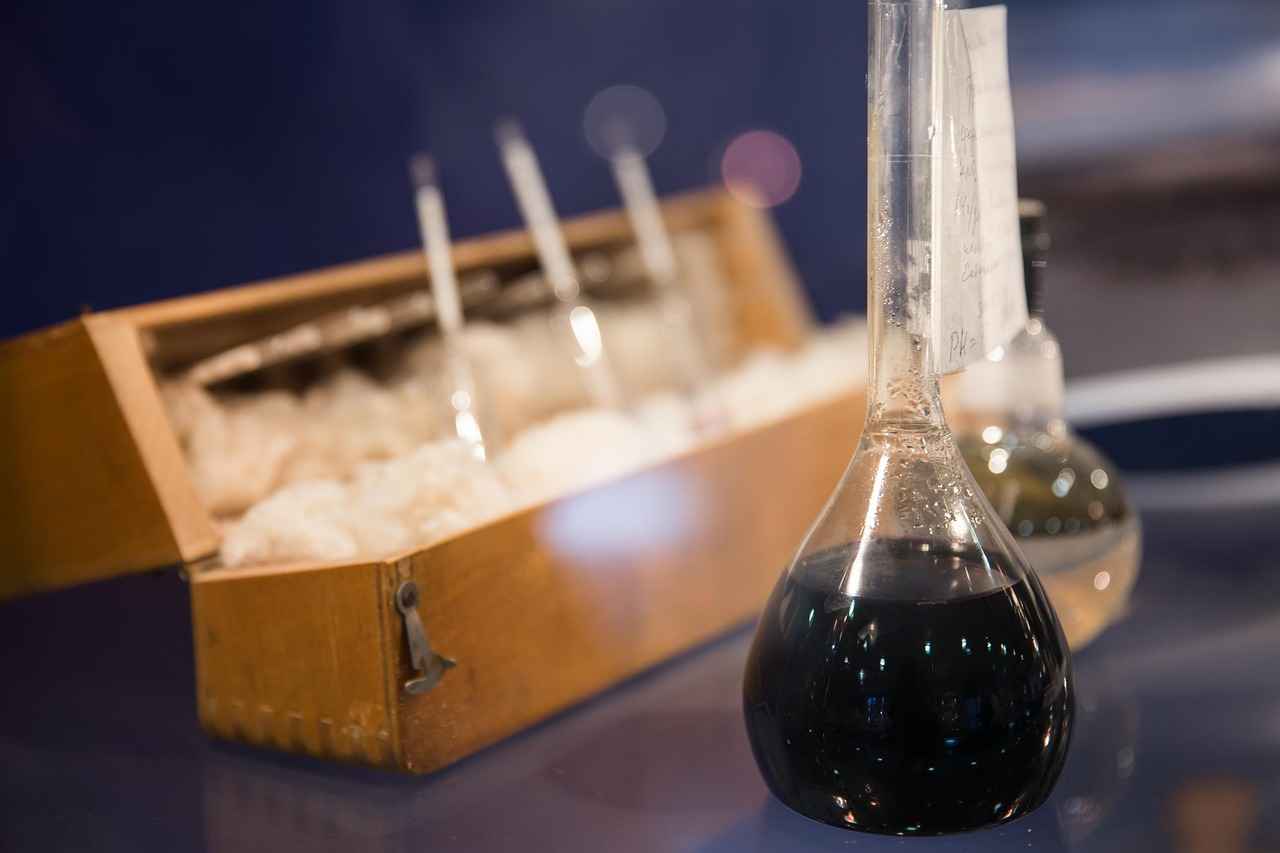
What is Muriatic Acid and Its Purpose in Pool Maintenance?
Muriatic acid, also known as hydrochloric acid, is a vital chemical in the realm of pool maintenance. This diluted form of hydrochloric acid plays an essential role in maintaining the overall health and clarity of pool water. Understanding its purpose and proper application can significantly enhance your pool care routine.
Muriatic acid is primarily used to adjust pH levels in swimming pools. The ideal pH range for pool water is between 7.2 and 7.8. If the pH level rises above this range, the water can become alkaline, leading to issues such as cloudy water, scaling on pool surfaces, and reduced effectiveness of chlorine. By adding muriatic acid, pool owners can effectively lower the pH, restoring balance and ensuring a safe swimming environment.
In addition to pH adjustment, muriatic acid is also effective in removing stains and buildup from pool surfaces. Over time, minerals, algae, and other contaminants can accumulate, causing unsightly marks on tiles and walls. Muriatic acid works by breaking down these deposits, making it easier to clean and maintain the pool’s aesthetic appeal.
While muriatic acid is beneficial, it is crucial to handle it with care due to its corrosive nature. Proper safety measures must be taken to prevent accidents and injuries. Always wear appropriate protective gear, including chemical-resistant gloves, goggles, and a mask, to shield yourself from potential splashes and fumes.
Determining the right dosage of muriatic acid is essential for effective pool maintenance. Over-application can lead to dangerously low pH levels, while too little may not achieve the desired results. To calculate the correct amount, pool owners should first measure their pool’s volume in gallons. A general guideline is to add approximately 1 quart of muriatic acid per 10,000 gallons of water to lower the pH by 0.1.
Before adding muriatic acid, it is imperative to test the pool water’s pH and alkalinity levels. This ensures that the adjustments made are accurate and effective. Various test kits are available, allowing pool owners to monitor water quality regularly.
Accidental spills of muriatic acid can pose serious risks. Knowing how to neutralize these spills is crucial for safety. If a spill occurs, evacuate the area immediately and ventilate the space. Wearing protective gear, sprinkle baking soda over the affected area to neutralize the acid. Allow it to react before cleaning up the residue.
While muriatic acid is effective, there are alternatives that pool owners can consider. Sodium bisulfate, for instance, is a dry acid that can lower pH levels without the same hazards associated with liquid acids. Additionally, natural pH adjusters like vinegar or citric acid can be used in certain situations, although their effectiveness may vary based on the size of the pool and existing water chemistry.
In conclusion, understanding the role of muriatic acid in pool maintenance is essential for achieving clean and safe swimming water. With proper handling, dosage, and safety precautions, pool owners can utilize this powerful chemical to maintain optimal water quality.
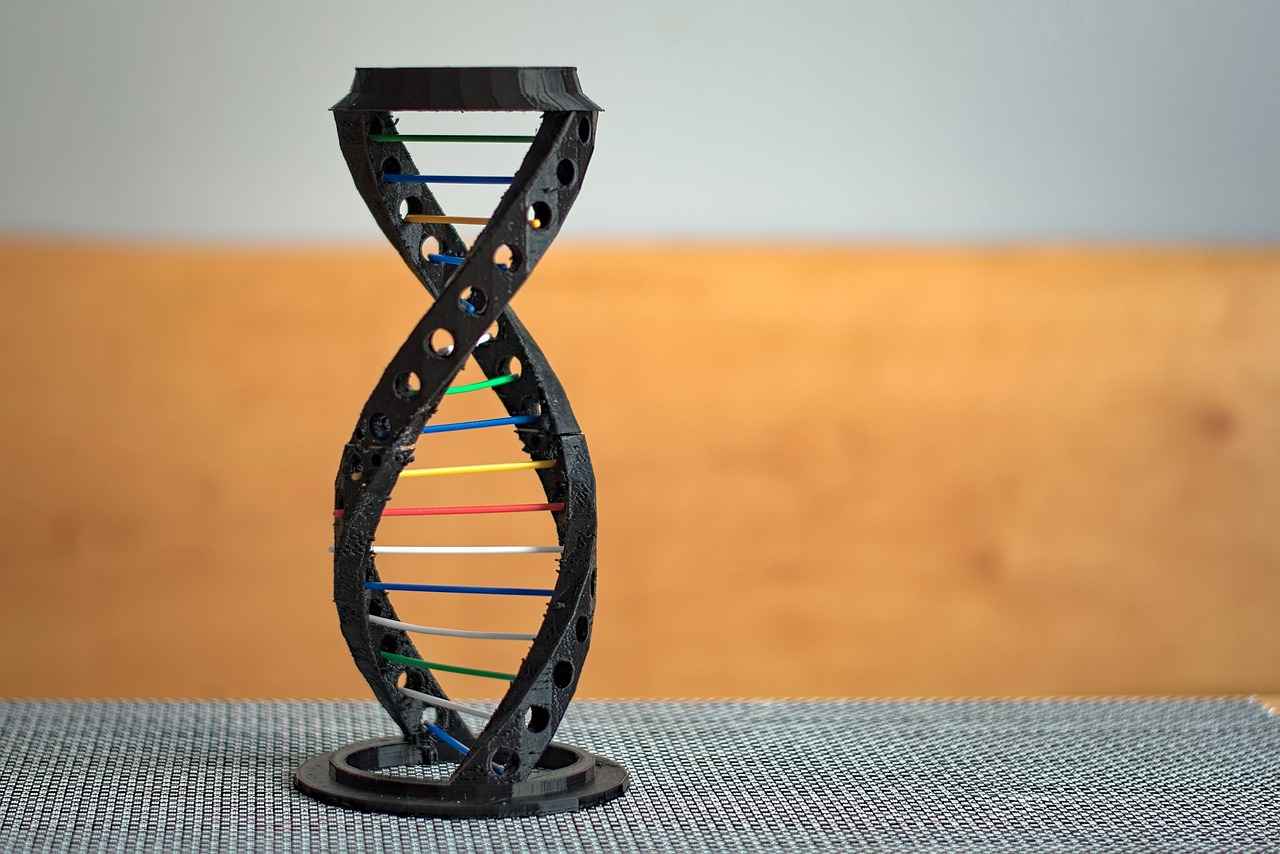
How to Safely Handle Muriatic Acid?
Handling muriatic acid requires utmost caution due to its highly corrosive nature. This powerful chemical, primarily used for adjusting pool pH levels, can pose significant risks if not handled properly. In this section, we will explore the essential precautions and safety measures necessary for the safe handling of muriatic acid.
Muriatic acid, or hydrochloric acid, can cause severe skin burns and respiratory problems if mishandled. Understanding the risks associated with this chemical is crucial for anyone involved in pool maintenance. Implementing safety protocols not only protects the user but also ensures a safe environment for others in the vicinity.
To minimize the risk of injury, wearing the right protective gear is vital. Here are the essential items you should consider:
- Gloves: Use chemical-resistant gloves to protect your hands from splashes and contact.
- Goggles: Safety goggles are necessary to shield your eyes from harmful fumes and spills.
- Respirator: A mask or respirator is crucial for preventing inhalation of toxic vapors.
When working with muriatic acid, follow these guidelines to ensure safe handling:
- Always work in a well-ventilated area: This minimizes the inhalation of fumes.
- Never mix with other chemicals: Combining muriatic acid with other substances can create hazardous reactions.
- Use a dedicated container: Always transfer muriatic acid to a labeled, acid-resistant container for storage and application.
Applying muriatic acid requires careful attention to detail. Follow these steps:
1. Test the pool water's pH level before adding acid.2. Dilute muriatic acid in water, never the other way around.3. Pour the diluted solution slowly into the pool, walking away from the edge.4. Allow the pool water to circulate for several hours before retesting pH levels.
Accidents can happen, and knowing how to respond is critical:
- Evacuate the area: Ensure that no one is in the vicinity of the spill.
- Ventilate the space: Open windows and doors to disperse fumes.
- Neutralize the spill: Use baking soda to neutralize the acid before cleaning up.
Proper storage is just as important as safe handling. Follow these guidelines:
- Store in a cool, dry place: Keep away from direct sunlight and heat sources.
- Keep out of reach of children: Ensure that the storage area is secure and inaccessible.
- Label containers clearly: Use appropriate hazard labels to indicate the contents and risks.
By following these safety measures and handling techniques, you can effectively use muriatic acid for pool maintenance while minimizing risks. Remember, safety should always be your top priority when working with any corrosive substances.
Essential Safety Gear for Muriatic Acid Use
When it comes to handling muriatic acid, safety should be your top priority. This powerful chemical, primarily used for pool maintenance, can pose serious health risks if not managed properly. The right safety gear is essential to protect yourself from potential hazards, including skin burns and respiratory issues. Below, we delve into the essential safety gear required for safe muriatic acid use, ensuring that your pool maintenance tasks are both effective and safe.
Muriatic acid is a corrosive substance that can cause significant harm upon contact with skin or inhalation. Therefore, wearing appropriate safety gear is not just a recommendation; it is a necessity. The right gear minimizes the risk of injury and ensures that you can work confidently and effectively.
- Gloves: Choose chemical-resistant gloves made from materials like neoprene or nitrile. These materials provide a barrier against acid splashes and protect your skin.
- Goggles: Protective goggles should be worn to shield your eyes from splashes. Ensure they fit well and provide a tight seal to prevent any acid from entering.
- Face Masks: A suitable respirator mask is crucial, especially when working in poorly ventilated areas. This will help prevent inhalation of harmful fumes.
- Protective Clothing: Long-sleeved shirts and pants made from durable materials can help protect your skin. Consider using an acid-resistant apron for extra protection.
Before handling muriatic acid, ensure you are wearing all the recommended safety gear. Here are some tips for proper usage:
- Inspect Your Gear: Check your gloves, goggles, and masks for any damage before use. Replace any equipment that shows signs of wear.
- Ensure a Proper Fit: Make sure all safety gear fits comfortably but securely. Loose-fitting gear can be a hazard if it gets caught or allows for splashes to enter.
- Follow Manufacturer Instructions: Always adhere to the guidelines provided with your safety gear to ensure maximum protection.
In addition to wearing safety gear, consider these additional precautions:
- Work in Well-Ventilated Areas: Ensure that the area where you are working is well-ventilated. This helps disperse harmful fumes and reduces inhalation risk.
- Keep Safety Equipment Nearby: Always have a first aid kit and an emergency eyewash station accessible in case of accidental exposure.
- Read Labels and Safety Data Sheets: Familiarize yourself with the properties of muriatic acid by reading the labels and safety data sheets (SDS). This knowledge can help you respond effectively in case of an accident.
Even with precautions, accidents can happen. Here’s what to do:
- If acid comes into contact with skin, immediately rinse the area with plenty of water for at least 15 minutes.
- If acid splashes into your eyes, flush them with water or an eyewash solution for at least 15 minutes and seek medical attention.
- For inhalation of fumes, move to fresh air immediately and seek medical help if symptoms persist.
By adhering to these safety measures and using the appropriate gear, you can significantly reduce the risks associated with muriatic acid, making your pool maintenance activities safer and more efficient.
Choosing the Right Gloves and Goggles
When working with muriatic acid, personal safety should always be a top priority. Proper protective gear is essential to prevent any accidents or injuries that may arise from handling this potent chemical. Among the most critical items in your safety arsenal are chemical-resistant gloves and goggles designed specifically for acid use.
Why are Chemical-Resistant Gloves Important?
Using chemical-resistant gloves is crucial when handling muriatic acid. These gloves are designed to withstand the corrosive properties of acids, ensuring that your skin remains protected from harmful splashes and spills. When selecting gloves, look for materials such as nitrile or neoprene, which offer excellent resistance to chemicals. Additionally, ensure that the gloves fit snugly to avoid any accidental exposure.
Choosing the Right Goggles
Equally important are goggles that provide a secure seal around your eyes. Regular safety glasses may not offer adequate protection against acid splashes. Opt for goggles that are specifically designed for chemical use, featuring anti-fog properties and side shields to protect against splashes from multiple angles. This will ensure that your eyes are safeguarded from any accidental exposure to muriatic acid.
Additional Safety Gear Considerations
In addition to gloves and goggles, consider wearing a face shield for extra protection, especially if you are working in a confined space where splashes are more likely. A respirator may also be necessary if you are working with muriatic acid in a poorly ventilated area, as the fumes can be harmful to your respiratory system.
Proper Usage and Maintenance of Safety Gear
- Always inspect your gloves and goggles for any signs of damage before use.
- Clean your safety gear after each use to prevent chemical residue buildup.
- Store your gloves and goggles in a cool, dry place to extend their lifespan.
Training and Awareness
It’s essential to be aware of the risks associated with muriatic acid and to receive proper training on how to handle it safely. Familiarize yourself with the Material Safety Data Sheet (MSDS) for muriatic acid, which provides detailed information on handling, storage, and emergency procedures. This knowledge will empower you to take the necessary precautions to protect yourself and others.
Conclusion
Choosing the right gloves and goggles is a vital step in ensuring your safety when handling muriatic acid. By investing in high-quality, chemical-resistant gear and following best practices for usage and maintenance, you can significantly reduce the risk of accidents and injuries. Always prioritize your safety and the safety of those around you when performing pool maintenance tasks that involve muriatic acid.
Ventilation and Safe Storage Practices
When working with muriatic acid, ensuring safety is paramount. One of the most critical aspects of handling this potent chemical is adequate ventilation and proper storage practices. Muriatic acid, primarily used in pool maintenance, can pose serious health risks if not handled correctly. This section will delve into the importance of ventilation and safe storage, providing essential tips for users.
Ventilation plays a vital role in maintaining a safe environment when using muriatic acid. The fumes released during the handling and application of muriatic acid can be hazardous, leading to respiratory problems or even chemical burns. Therefore, it is essential to:
- Work in an open area: Whenever possible, conduct your work outside or in a well-ventilated space to minimize exposure to harmful vapors.
- Utilize fans: If working indoors, use exhaust fans to help circulate air and disperse fumes effectively.
- Wear protective gear: Along with ventilation, using appropriate personal protective equipment (PPE) such as masks and goggles will further reduce health risks.
Proper storage of muriatic acid is equally important for safety. Here are some essential guidelines:
- Cool and dry place: Store muriatic acid in a cool, dry location, away from direct sunlight. Heat can increase pressure within the container, potentially leading to leaks or ruptures.
- Incompatible substances: Keep muriatic acid away from incompatible materials such as bases, organic materials, and oxidizers. This prevents dangerous reactions that can occur if these substances come into contact.
- Secure containers: Ensure that the acid is stored in tightly sealed, labeled containers to prevent accidental spills or exposure.
Despite taking precautions, spills can happen. Knowing how to respond is crucial:
- Evacuate the area: Immediately clear the space of any personnel to minimize exposure to fumes.
- Ventilate: Open windows and doors to allow fresh air to circulate and disperse the vapors.
- Neutralize: Use baking soda to neutralize small spills. Sprinkle it generously over the affected area and allow it to react before cleaning.
In summary, ensuring adequate ventilation and safe storage practices when handling muriatic acid is essential for maintaining a safe working environment. By following the outlined guidelines, users can significantly reduce the risks associated with this powerful chemical. Always prioritize safety by utilizing protective gear and being aware of your surroundings. Remember, a well-informed approach to handling muriatic acid not only protects you but also enhances the effectiveness of your pool maintenance efforts.
Steps for Safe Application of Muriatic Acid
When it comes to maintaining a clean and balanced swimming pool, muriatic acid plays a crucial role. However, applying this potent chemical safely is paramount. Following specific steps when applying muriatic acid can enhance safety and effectiveness, ensuring that pool water is balanced without hazards. Here’s a comprehensive guide on how to apply muriatic acid safely.
Before you begin the application process, it’s essential to prepare your work area. Ensure that the pool area is clear of any obstacles, and remove any nearby items that could be damaged by splashes. Proper ventilation is also critical; if you’re working indoors, open windows and doors to allow fresh air to circulate.
Safety should always come first. Equip yourself with the following protective gear:
- Chemical-resistant gloves
- Safety goggles
- Face mask or respirator
These items will help protect your skin, eyes, and respiratory system from the corrosive effects of muriatic acid.
Understanding the correct dosage of muriatic acid is vital. To determine how much acid to use, you must know your pool’s volume in gallons. Generally, a pool volume calculator can help you find the right amount. As a rule of thumb, start with a small amount and gradually increase as needed.
Never add water to muriatic acid; instead, always dilute the acid by adding it to water. This helps to prevent violent reactions that can occur if water is added to acid. Use a clean plastic container to mix the solution, and always add the acid to the water slowly.
Once diluted, carefully pour the muriatic acid solution into the pool. Start at the deep end and work your way towards the shallow end. Disperse the acid evenly across the surface of the water to ensure it mixes thoroughly. Avoid pouring it directly onto pool surfaces to prevent damage.
After applying muriatic acid, allow the pool water to circulate for at least four to six hours. This time frame enables the acid to effectively lower the pH and alkalinity levels. During this period, avoid swimming and keep pets away from the water.
Once the circulation time has passed, it’s crucial to test the water chemistry again. Use a reliable pool test kit to check the pH and alkalinity levels. Adjust as necessary to achieve the desired balance. Ideally, the pH should be between 7.2 and 7.8 for safe swimming conditions.
After completing the application, clean your tools and workspace thoroughly. Dispose of any leftover diluted acid according to local regulations. Always store muriatic acid in a cool, dry place, away from sunlight and out of reach of children.
By following these steps, you can safely and effectively apply muriatic acid to maintain your pool. Remember, safety is the top priority, and taking the necessary precautions will ensure a clean and balanced swimming environment.

What Are the Correct Dosages for Muriatic Acid?
Understanding the correct dosages for muriatic acid is crucial for maintaining a safe and effective swimming pool environment. Muriatic acid, also known as hydrochloric acid, plays a vital role in adjusting the pH levels of pool water. However, achieving the right balance is essential; both over-application and under-application can lead to significant issues.
The accurate dosage of muriatic acid is critical for several reasons:
- Preventing Damage: Excessive acid can corrode pool surfaces, damage equipment, and harm swimmers.
- Maintaining Water Quality: Insufficient acid levels may fail to lower pH effectively, leading to cloudy water and algae growth.
- Safety Concerns: Improper handling and application can pose health risks to users and maintenance personnel.
To determine the correct dosage of muriatic acid for your pool, follow these guidelines:
1. Know your pool's volume in gallons.2. Use the formula: (Pool Volume in Gallons) x (Desired pH Change) x (0.5) Muriatic Acid in ounces.
For example, if your pool holds 20,000 gallons and you need to reduce the pH by 0.5, you would calculate:
20,000 x 0.5 x 0.5 5,000 ounces of muriatic acid.
Before applying muriatic acid, it is essential to test the water’s pH and alkalinity levels. This step ensures that you are making the correct adjustments:
- Use a reliable test kit: Test kits can provide accurate readings of pH and alkalinity.
- Adjust incrementally: If pH is significantly high, consider adding acid in smaller doses to avoid drastic changes.
Improper dosage can lead to various risks:
- Corrosive Damage: Overuse can corrode pool liners, tiles, and equipment, leading to costly repairs.
- Health Hazards: High acidity can irritate skin and eyes, posing risks to swimmers.
- Environmental Impact: Improperly balanced water can harm local ecosystems if the pool water is drained improperly.
To ensure safe and effective application of muriatic acid, adhere to these best practices:
- Wear protective gear: Always use gloves, goggles, and a mask to protect yourself from splashes and fumes.
- Add acid to water: When diluting or mixing, always add acid to water, not the other way around, to prevent violent reactions.
- Apply in the evening: Adding muriatic acid in the evening can help minimize the effects of sunlight on its efficacy.
By following these guidelines, pool owners can ensure they are using muriatic acid effectively and safely, maintaining a clean and inviting swimming environment. Remember, the key to successful pool maintenance lies in understanding the chemical properties of the products used and applying them with care.
Calculating Acid Requirements Based on Pool Volume
When it comes to maintaining a clean and safe swimming pool, understanding the proper use of muriatic acid is essential. One of the key factors in using this chemical effectively is knowing how to accurately calculate the amount needed based on your pool’s volume.
The volume of your pool, measured in gallons, directly influences the amount of muriatic acid required for effective pH adjustment. Without this information, pool owners risk over-application, which can lead to harmful water conditions, or under-application, which may not adequately correct pH levels.
To begin, accurately calculate your pool’s volume. Here are some common formulas:
- Rectangular Pools: Length x Width x Average Depth x 7.48 Volume in gallons
- Round Pools: (Diameter x Diameter x Average Depth x 3.14) x 7.48 Volume in gallons
- Oval Pools: (Length x Width x Average Depth x 3.14) x 7.48 Volume in gallons
Once you know your pool’s volume, you can use a simple formula to determine the dosage of muriatic acid:
Dosage (in ounces) (Pool Volume in gallons x Desired pH change) / 10
For instance, if your pool is 20,000 gallons and you need to lower the pH by 0.5, the calculation would be:
Dosage (20,000 x 0.5) / 10 100 ounces of muriatic acid
Before adding muriatic acid, always test your pool water’s current pH and alkalinity levels. This ensures that you are making informed adjustments and not applying acid unnecessarily. A reliable test kit can help you monitor these levels accurately.
When applying muriatic acid, ensure you follow these safety measures:
- Always wear protective gear such as gloves and goggles.
- Pour the acid into water, never the other way around, to prevent dangerous reactions.
- Apply the acid in the evening or early morning to minimize the effect of sunlight.
- Distribute the acid evenly around the pool to avoid concentrated areas.
After applying muriatic acid, wait a few hours before retesting the water. This allows the acid to circulate and properly adjust the pH levels. Always ensure that the pH falls within the ideal range of 7.2 to 7.8 for optimal swimming conditions.
When calculating and applying muriatic acid, avoid these common pitfalls:
- Neglecting to measure pool volume accurately.
- Ignoring safety precautions during handling.
- Failing to retest water after acid application.
By understanding how to calculate the correct dosage of muriatic acid based on your pool’s volume, you can maintain a safe and enjoyable swimming environment. Always prioritize safety and accuracy to ensure the best results.
Testing Water Levels Before Application
When it comes to maintaining your pool, ensuring the correct chemical balance is absolutely essential. One of the most critical steps in this process is testing the water’s pH and alkalinity levels before adding any chemicals, including muriatic acid. This practice not only guarantees that you make accurate adjustments but also helps prevent the risk of excessive acidification, which can lead to damage and safety hazards.
Testing the water levels in your pool is important for several reasons:
- Safety: Understanding the pH and alkalinity levels helps you avoid dangerous imbalances that can affect swimmers’ health.
- Equipment Protection: Proper water chemistry prevents corrosion and scaling in pool equipment, extending its lifespan.
- Water Clarity: Maintaining balanced water chemistry ensures clear and inviting pool water, enhancing the overall swimming experience.
Testing your pool water is a straightforward process. Here’s how you can do it:
- Gather Testing Supplies: Purchase a reliable pool water testing kit that includes test strips or liquid reagents for pH and alkalinity.
- Collect Water Sample: Use a clean container to collect a sample of pool water, ideally from elbow-deep in the pool, away from any returns or skimmers.
- Perform the Test: Follow the instructions provided with your testing kit. For test strips, dip the strip into the water sample and compare the colors to the chart. For liquid tests, add the reagents as directed and observe the color change.
Before you add muriatic acid, it’s crucial to understand what pH and alkalinity levels mean:
- pH Level: The pH scale ranges from 0 to 14, with 7 being neutral. For pools, a pH level between 7.2 and 7.8 is ideal. Levels below 7.2 indicate acidic water, which can corrode surfaces, while levels above 7.8 can lead to scaling.
- Alkalinity: Total alkalinity acts as a buffer for pH levels. The ideal range is between 80 to 120 parts per million (ppm). Low alkalinity can cause pH levels to fluctuate, while high alkalinity can make it difficult to adjust pH.
Once you have tested the pH and alkalinity levels, you can determine if muriatic acid is necessary. If the pH is above 7.8, adding muriatic acid can help lower it. However, it’s essential to make adjustments gradually. Adding too much acid at once can lead to rapid fluctuations in pH, which can be harmful.
When you decide to add muriatic acid:
- Always dilute the acid: Never add water to acid; instead, add acid to water to prevent violent reactions.
- Add in sections: Pour the diluted solution into the pool in front of a return jet to help distribute it evenly.
- Wait and Retest: After adding muriatic acid, wait at least 4 hours before retesting the pH and alkalinity levels to ensure they are within the desired range.
By following these guidelines, you can ensure that your pool remains safe, clean, and enjoyable for everyone. Testing the water before adding muriatic acid not only protects your investment but also enhances the overall swimming experience.
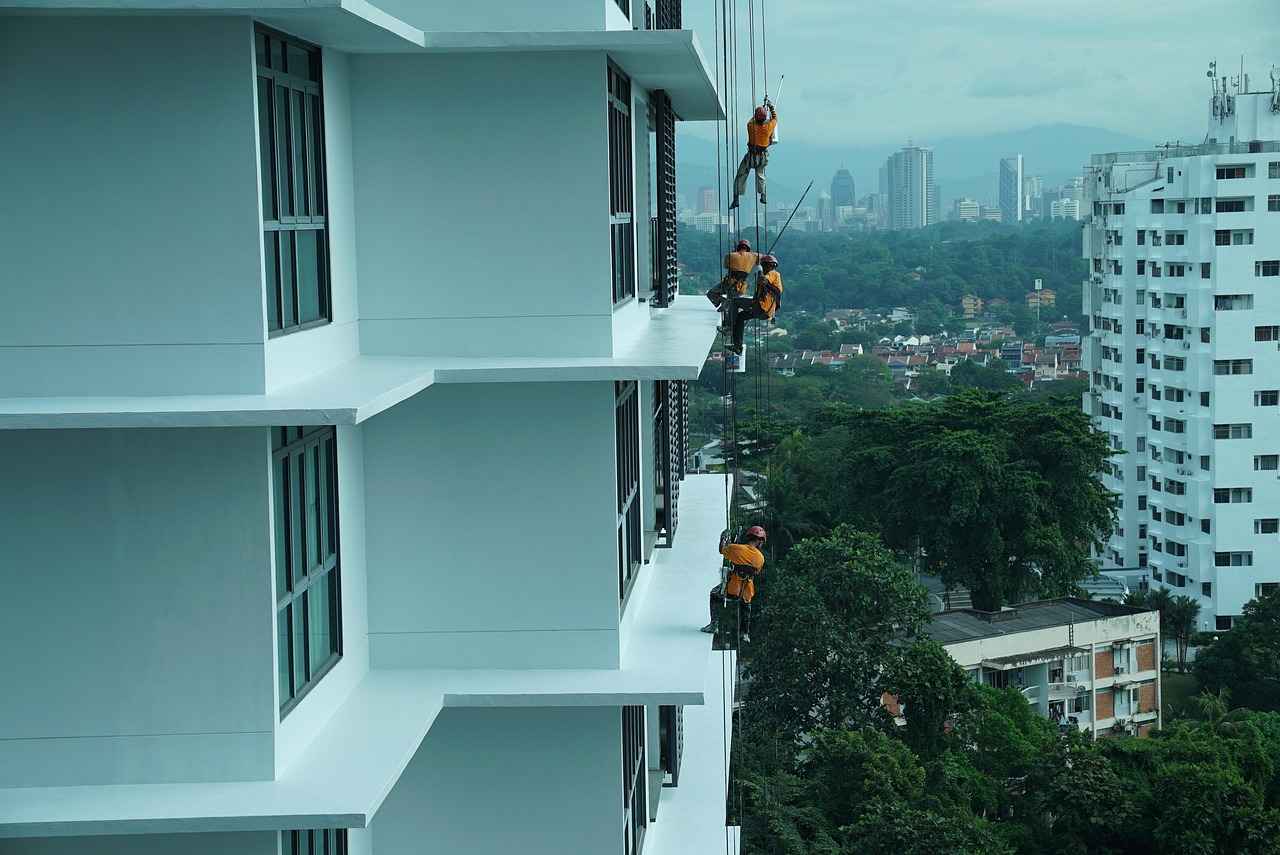
How to Neutralize Muriatic Acid Spills?
When handling muriatic acid, safety is paramount. Accidental spills can occur, and knowing how to neutralize muriatic acid is crucial for safety. Quick action can minimize damage and health risks. This article outlines the necessary steps and precautions to take when dealing with spills, ensuring a safe environment for everyone involved.
Muriatic acid, or hydrochloric acid, is a powerful chemical used primarily for pool maintenance. Its corrosive nature means that spills can lead to severe injuries or damage to surfaces. The vapors can also cause respiratory issues, making it essential to act quickly and effectively in the event of a spill.
- Evacuate the Area: Ensure that all individuals leave the vicinity to avoid inhaling harmful fumes.
- Ventilate the Space: Open windows and doors to promote airflow, which helps dissipate the acid’s vapors.
- Wear Protective Gear: Before attempting to clean up the spill, put on acid-resistant gloves, goggles, and a mask to protect yourself from exposure.
Neutralizing muriatic acid spills is a critical step in ensuring safety. The most effective method involves using baking soda, a common household item.
Baking soda, or sodium bicarbonate, is a safe and effective neutralizer for muriatic acid. Follow these steps:
- Sprinkle Baking Soda: Generously sprinkle baking soda over the affected area. This will help neutralize the acid.
- Allow Reaction Time: Let the baking soda sit for a few minutes. You will notice fizzing, which indicates that the acid is being neutralized.
- Clean Up Residues: Once the fizzing stops, carefully sweep up the neutralized mixture and dispose of it according to local regulations.
In addition to immediate spill response, taking preventive measures can significantly reduce the risk of spills:
- Proper Storage: Store muriatic acid in a cool, dry place, away from sunlight and incompatible substances.
- Use in Well-Ventilated Areas: Always use muriatic acid in a space with good ventilation to minimize fume exposure.
- Training and Awareness: Ensure that anyone handling muriatic acid is trained in its safe use and understands the emergency procedures for spills.
In cases of large spills, it may be necessary to contact professional hazardous material cleanup services. These experts are trained to handle chemical spills safely and can mitigate risks effectively.
By following these guidelines, you can ensure a safer environment when working with muriatic acid. Remember, quick action and proper knowledge are key to minimizing risks associated with accidental spills. Always prioritize safety and be prepared for emergencies when handling this potent chemical.
Immediate Actions to Take After a Spill
When dealing with muriatic acid, safety is paramount, especially in the event of a spill. Understanding the immediate actions to take can significantly reduce the risks of injury and damage. This section outlines the essential steps to follow if a muriatic acid spill occurs, ensuring that safety is prioritized.
If a muriatic acid spill occurs, follow these critical steps:
- Evacuate the Area: Quickly remove all individuals from the vicinity of the spill. This action helps prevent exposure to harmful fumes and skin contact with the acid.
- Ventilate the Space: Open windows and doors to ensure proper air circulation. If possible, use fans to help disperse any fumes that may have accumulated.
- Wear Protective Gear: Before attempting to clean up the spill, put on appropriate protective equipment. This should include:
- Gloves: Chemical-resistant gloves are crucial to protect your hands from burns.
- Goggles: Safety goggles will shield your eyes from splashes and fumes.
- Mask: A respirator or mask will help protect against inhaling harmful vapors.
Once you have taken the necessary safety precautions, the next step is to neutralize the acid:
- Use Baking Soda: One of the most effective substances for neutralizing muriatic acid is baking soda. Sprinkle it generously over the spill area. The reaction will produce carbon dioxide, which helps to neutralize the acid.
- Wait for Reaction: Allow the baking soda to react with the acid. You will notice fizzing as the acid is neutralized. Wait until the fizzing stops before proceeding.
- Clean Up: After the reaction has ceased, carefully scoop up the neutralized mixture using a dustpan and dispose of it according to local hazardous waste regulations.
To ensure safety while handling muriatic acid spills, avoid the following:
- Do Not Use Water: Adding water directly to muriatic acid can cause violent reactions, including splattering, which can lead to serious injuries.
- Avoid Inhalation: Do not stay in the area longer than necessary, especially if you begin to feel light-headed or experience difficulty breathing.
- Never Ignore the Spill: Prompt action is essential. Ignoring the spill can lead to further hazards, including damage to surfaces and health risks to individuals nearby.
In some cases, it may be necessary to contact professionals for assistance:
- If the spill is extensive or if you feel unqualified to handle the situation safely, do not hesitate to call emergency services or a hazardous material cleanup team.
- Always prioritize personal safety over attempting to manage a spill alone.
By following these guidelines, you can effectively manage a muriatic acid spill and minimize risks. Always remember that safety comes first, and when in doubt, seek help.
Using Baking Soda for Neutralization
When dealing with the potential hazards of muriatic acid, it is essential to know how to handle spills effectively. One of the most effective and accessible methods to neutralize muriatic acid spills is by using baking soda. This common household item not only serves as a leavening agent in baking but also plays a crucial role in ensuring safety during pool maintenance.
Baking soda, or sodium bicarbonate, is a mild alkaline compound. When it comes into contact with muriatic acid, it undergoes a chemical reaction that produces carbon dioxide gas and water, effectively neutralizing the acid. This reaction helps in reducing the acidity of the spill, making it safer to handle.
To ensure a safe and effective neutralization process, follow these steps:
- Immediate Evacuation: As soon as a spill occurs, evacuate the area to ensure safety for yourself and others.
- Wear Protective Gear: Before addressing the spill, put on appropriate protective gear, including gloves, goggles, and a mask.
- Sprinkle Baking Soda: Generously sprinkle baking soda over the affected area. This will start the neutralization process.
- Observe the Reaction: Allow the baking soda to react with the acid. You may notice fizzing or bubbling as the reaction occurs.
- Clean Up Residues: Once the reaction has ceased, carefully sweep up the residues and dispose of them according to local regulations. Ensure that the area is rinsed thoroughly with water.
In the case of a large spill, using baking soda might not be sufficient. Here are additional steps to consider:
- Contact Professionals: For extensive spills, it’s advisable to contact a professional hazardous materials cleanup service.
- Use Absorbent Materials: In addition to baking soda, consider using absorbent materials such as sand or clay to contain the spill.
- Ventilate the Area: Ensure that the area is well-ventilated to disperse any harmful fumes released during the spill.
While baking soda is generally safe to use, it is essential to take specific precautions:
- Do Not Mix with Other Chemicals: Avoid mixing baking soda with other cleaning agents, especially acids, as this can lead to dangerous reactions.
- Test the Area: After cleaning, always test the area to ensure that all acid has been neutralized before allowing people or pets to return.
- Store Properly: Keep baking soda in a cool, dry place to maintain its effectiveness for future use.
In summary, baking soda is a valuable tool for neutralizing muriatic acid spills. Its ability to react with acid safely makes it an essential item for anyone involved in pool maintenance. By following the outlined steps and taking necessary precautions, you can ensure a safe environment while effectively managing any spills that may occur.
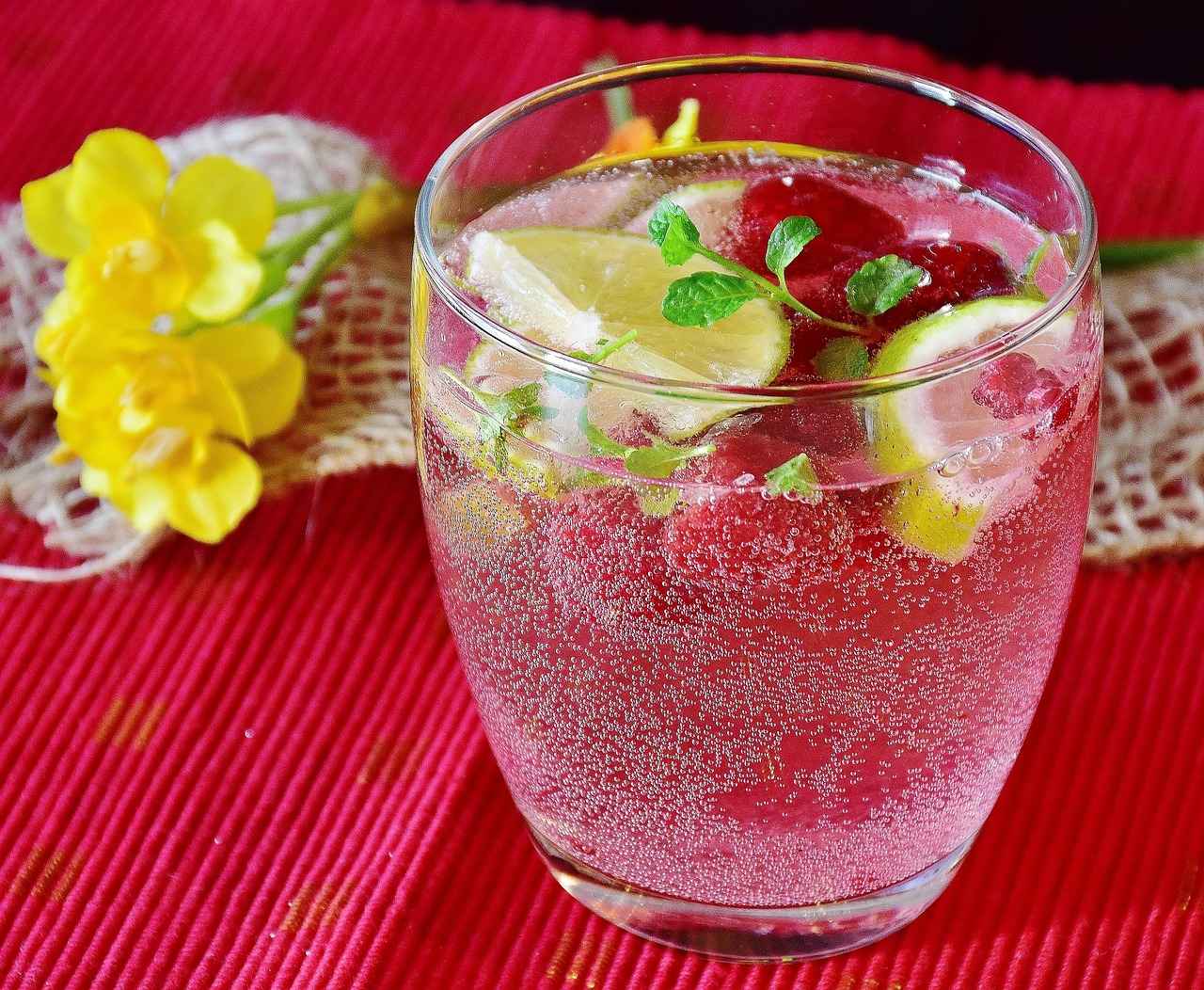
What Are the Alternatives to Muriatic Acid?
When it comes to maintaining a clean and safe swimming pool, muriatic acid has long been a go-to solution for many pool owners. However, as awareness of safety and environmental concerns grows, it is essential to explore safer alternatives that can effectively manage pool chemistry without the risks associated with muriatic acid. In this section, we will delve into several alternatives, providing insights into their benefits and usage.
While muriatic acid is effective for adjusting pH levels and removing stains, it poses potential hazards. These include:
- Corrosiveness: Muriatic acid can cause severe burns and damage surfaces.
- Fumes: The strong fumes can irritate the respiratory system.
- Environmental Impact: Improper disposal can harm local ecosystems.
Given these concerns, exploring alternatives can enhance safety and effectiveness in pool maintenance.
Sodium bisulfate, often referred to as dry acid, is a popular alternative for reducing pH levels. It is less corrosive than muriatic acid and can be easier to handle. Here are some advantages:
- Ease of Use: It comes in a granular form that dissolves easily in water.
- Less Fume Production: Unlike muriatic acid, sodium bisulfate produces minimal fumes, making it safer for indoor use.
- Storage: It is less hazardous to store compared to liquid acids.
For those looking for environmentally friendly options, natural pH adjusters like vinegar and citric acid can be considered. While these substances are less potent than traditional acids, they can be effective in specific situations:
- Vinegar: This household staple can lower pH levels, but it may require larger quantities for significant adjustments.
- Citric Acid: Derived from citrus fruits, citric acid can act as a mild pH reducer and is less harmful than muriatic acid.
However, the effectiveness of these natural alternatives can vary based on pool size and existing water chemistry, so it’s important to test the water before application.
In addition to lowering pH, maintaining proper alkalinity is crucial for pool health. Baking soda is a safe and effective alternative for raising alkalinity levels. It is readily available and poses minimal health risks.
- Cost-Effective: Baking soda is inexpensive and can be found in most grocery stores.
- Gentle on Surfaces: It does not cause corrosion and is safe for all pool types.
When selecting an alternative to muriatic acid, consider the following factors:
- Pool Size: Larger pools may require more potent solutions.
- Water Chemistry: Test your water regularly to understand its specific needs.
- Safety Considerations: Always prioritize options that minimize health risks.
By understanding these alternatives, pool owners can make informed decisions that enhance safety and maintain the effectiveness of their pool maintenance routine.
Using Sodium Bisulfate as a Safer Option
Sodium bisulfate, often referred to as dry acid, has gained recognition as a safer alternative to traditional muriatic acid in the realm of pool maintenance. This compound not only effectively lowers pH levels but does so with significantly reduced risks associated with liquid acids. Understanding the advantages of sodium bisulfate can empower pool owners to make informed decisions regarding their pool care routines.
Sodium bisulfate is a white crystalline powder that is less corrosive than muriatic acid. It is often used in various applications, including swimming pools, to regulate acidity levels. Its chemical formula is NaHSO₄, and it acts as a dry acid, making it easier to handle and store compared to its liquid counterparts.
- Safety: One of the primary advantages of sodium bisulfate is its safety profile. Unlike muriatic acid, which can cause severe burns and respiratory issues if mishandled, sodium bisulfate poses minimal health risks when used correctly.
- Ease of Use: Being a dry powder, sodium bisulfate is easier to measure and apply. There is no risk of spills, which can be a significant concern with liquid acids.
- Less Fume Production: Sodium bisulfate generates fewer fumes compared to muriatic acid, making it more suitable for indoor pool environments or areas with limited ventilation.
To achieve optimal results when using sodium bisulfate, it is essential to follow a few straightforward steps:
- Testing Water Chemistry: Before adding sodium bisulfate, conduct a thorough test of your pool water’s pH and alkalinity levels. This ensures you know how much product to use.
- Calculating Dosage: The amount of sodium bisulfate required will depend on your pool’s volume and the current pH level. Typically, adding 1 pound of sodium bisulfate can lower the pH of 10,000 gallons of water by approximately 0.2.
- Application: Disperse the sodium bisulfate evenly across the surface of the pool water. Allow it to dissolve completely before retesting the pH levels.
While sodium bisulfate is generally safer, it is essential to be aware of a few considerations:
- Cost: Sodium bisulfate can be more expensive than muriatic acid, which may be a factor for some pool owners.
- Effectiveness: Although sodium bisulfate is effective for pH adjustment, it may not be as potent for removing stains or scaling, where muriatic acid excels.
When considering the two options, sodium bisulfate stands out for its user-friendly nature and lower risk profile. Muriatic acid, while effective, requires stringent safety measures and presents higher hazards in terms of handling and storage. For those looking to maintain a safe and clean pool environment, sodium bisulfate is often the preferred choice.
In conclusion, sodium bisulfate offers a practical and safer alternative for pool maintenance, especially for those who prioritize safety and ease of use. By understanding its benefits and proper application methods, pool owners can effectively manage their water chemistry without the risks associated with traditional liquid acids.
Natural pH Adjusters: Are They Effective?
Maintaining the right pH level in your pool is crucial for ensuring a safe and enjoyable swimming environment. While many pool owners rely on traditional chemicals like muriatic acid to adjust pH levels, there are natural alternatives that can be considered. This section will explore the effectiveness of natural pH adjusters such as vinegar and citric acid, and how they can be applied in specific situations.
Natural pH adjusters are substances derived from natural sources that can help balance the acidity or alkalinity of pool water. Common examples include:
- Vinegar: A common household item, vinegar is acidic and can help lower pH levels.
- Citric Acid: Found in citrus fruits, citric acid is another effective natural acid that can be used to adjust pH.
While vinegar and citric acid can be effective in certain scenarios, their effectiveness may vary depending on several factors:
- Pool Size: The larger the pool, the more challenging it may be to achieve significant pH adjustments using natural acids. For small pools or spas, vinegar or citric acid may work effectively.
- Existing Water Chemistry: The current chemical balance of the pool water plays a crucial role. If the water is already highly alkaline, natural adjusters may have limited impact.
Natural pH adjusters can be particularly useful in the following situations:
- Minor Adjustments: If your pool’s pH is slightly above the recommended range, a small amount of vinegar or citric acid may bring it back into balance.
- Eco-Friendly Preferences: For those who prefer to use environmentally friendly products, natural acids are a safer alternative to harsh chemicals.
Despite their benefits, there are limitations to using natural pH adjusters:
- Slow Acting: Natural acids may take longer to adjust pH levels compared to stronger chemical alternatives.
- Inconsistent Results: The effectiveness can vary significantly based on the conditions mentioned earlier, leading to unpredictable results.
If you decide to use natural pH adjusters, consider the following best practices:
- Test Water Regularly: Always test your pool water before and after applying any pH adjusters to monitor changes accurately.
- Start Small: Begin with a small amount of vinegar or citric acid and gradually increase if necessary. This approach helps avoid over-acidifying the water.
Natural pH adjusters like vinegar and citric acid can serve as viable options for pool maintenance, particularly in specific situations where traditional chemicals may not be necessary. However, it is important to understand their limitations and to use them judiciously to maintain optimal water quality.
Frequently Asked Questions
- What safety precautions should I take when using muriatic acid?
Always wear protective gear such as gloves, goggles, and a mask to shield yourself from splashes and fumes. Ensure your workspace is well-ventilated and keep a neutralizing agent, like baking soda, nearby in case of spills.
- How do I determine the right amount of muriatic acid for my pool?
To calculate the correct dosage, know your pool’s volume in gallons. Use a reliable formula to figure out how much acid to add based on your current pH levels and desired adjustments.
- What should I do if I accidentally spill muriatic acid?
If a spill occurs, evacuate the area immediately and ventilate the space. Wear protective gear before neutralizing the acid with baking soda, then clean up the residues carefully.
- Are there safer alternatives to muriatic acid for pool maintenance?
Yes! Sodium bisulfate is a safer dry acid option for lowering pH levels. Additionally, natural pH adjusters like vinegar or citric acid can be used, though their effectiveness may vary.


